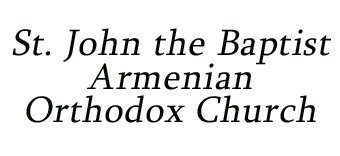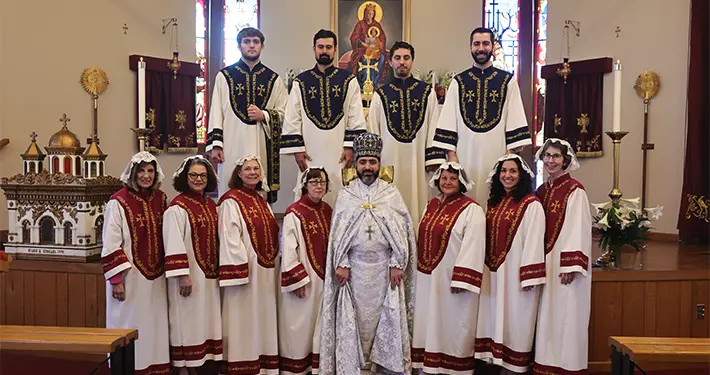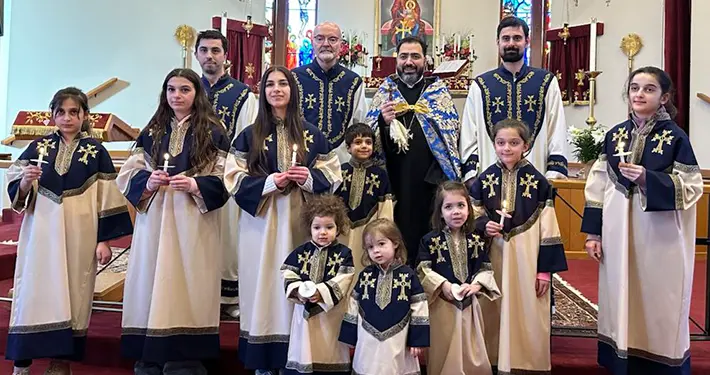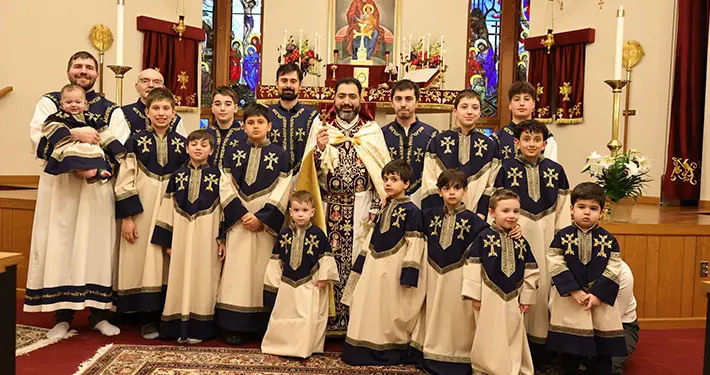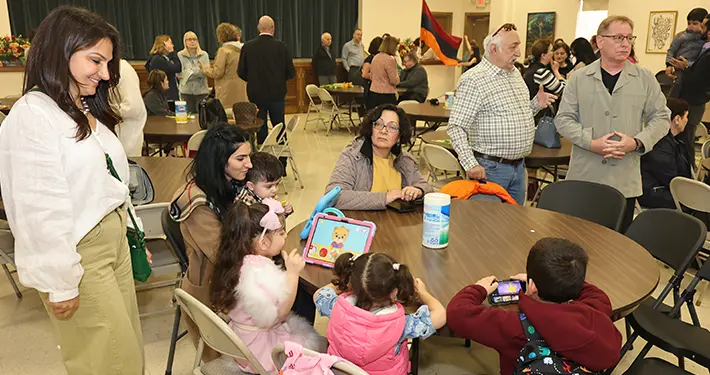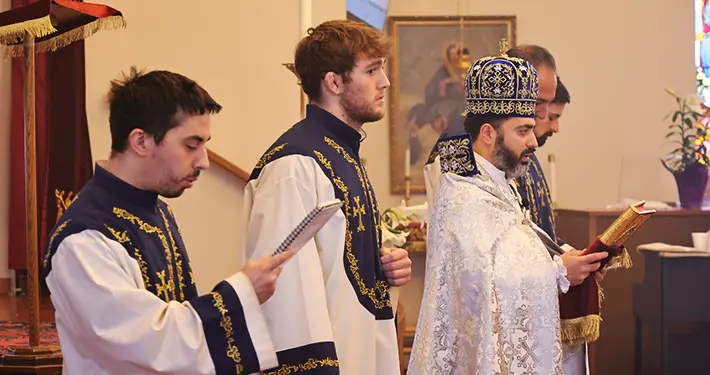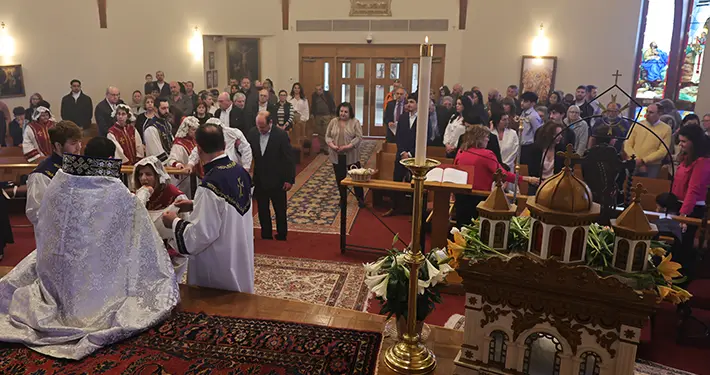FROM PALM SUNDAY THROUGH EASTER, ST. JOHN KEPT A FULL SCHEDULE
April 20, 2025
By David Luhrssen
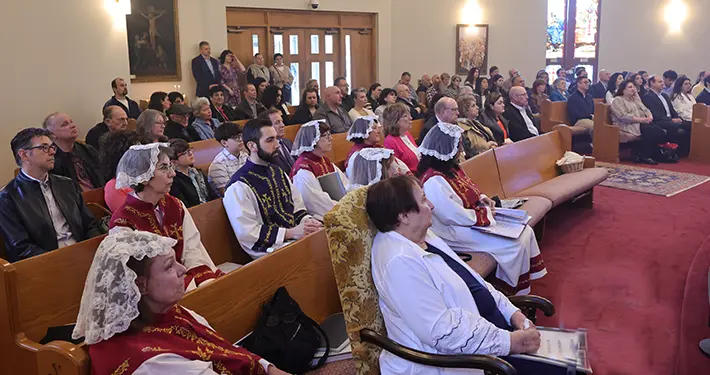
Palm Sunday is the celebratory bridge between two periods of profound reflection on the Armenian Church calendar, Lent and Holy Week. On Palm Sunday, the sanctuary curtain was opened, the gospel reading commemorated Jesus’ triumphant entry into Jerusalem, Holy Communion was offered for the first time in 40 days and the Opening of the Doors ceremony was performed.
In his sermon, Rev. Fr. Guregh Hambardzumyan used the analogy of an hourglass to describe our experience of time. The narrow funnel connecting past to future represents the present moment, forever slipping into the future. Since we cannot undo our past or correct the future, we need to focus on the present where our encounter with life and God is occurring.
The observation of Holy Week began on Tuesday, April 15 with the Commemoration of the Ten Maidens. The rite remembers Jesus’ parable of the five wise brides who prepared for the night ahead by purchasing oil for their lamps, and five foolish brides whose lamps went dark. The parable is a call for us to always be prepared and vigilant for Christ, and in his homily, Der Guregh tied the Commemoration to the words of Sunday’s Opening of the Door and to the coming Resurrection at Easter. Girls from the St. John community participated in the ceremony by holding candles.
Holy Thursday has always been commemorated in the Armenian Church by the Washing of the Feet, a beautiful ceremony in which the priest washes the feet of parishioners. The rite remembers Jesus’ startling act of humility, the Creator serving his Creation by washing the feet of his disciples. Der Guregh washed the feet of a dozen boys, representing the community’s future, as well as the altar servers. In his remarks, Der Guregh said that the meaning of Christianity is service grounded in love, as exemplified by Jesus’ love for his disciples. Afterward, he performed the Tenebrae (Darkness) service.
The Order of the Entombment was performed on Holy Friday, with the Kerezman (Tomb of Christ) covered in flowers before the closed curtain. On Holy Saturday, the Prophecy of Daniel was recited before the curtain opened. After Badarak, Der Guregh brought a candle from the altar and lit the candles of the congregants, symbolizing the light of Christ entering the world through his Resurrection.
The sanctuary was crowded with worshippers on Easter Sunday. In his sermon, Der Guregh spoke to the meaning of the rites of Palm Sunday, Holy Week and Easter. “We do not treat these days as distant historical events, but as a mystical present,” he emphasized. “For in the Church, we are participants in it, every time we get together to commemorate or celebrate a feast or divine liturgy we participate and commune with God.”
He described the custom in some churches of placing a mirror in the Tomb of Christ causing worshippers to see themselves as they venerate it. “If next year I place a mirror under the tomb of Christ, and invited you to go under, what would you see? Would you look away or would you look right in the mirror? The mirror beneath the tomb is a beautiful tradition that some churches do which also means that the burial of Jesus is not an ending. It is the beginning.”
Der Guregh added a quote from St. Paul: “‘It is no longer I who live, but Christ who lives in me.’ This is the mystery of the mirror. It is not the mirror that shines, but the light that it reflects. And that light is Christ, the Light of the world.”
After Easter Badarak, members of the community gathered in the church Cultural Hall for Easter barbeque.
